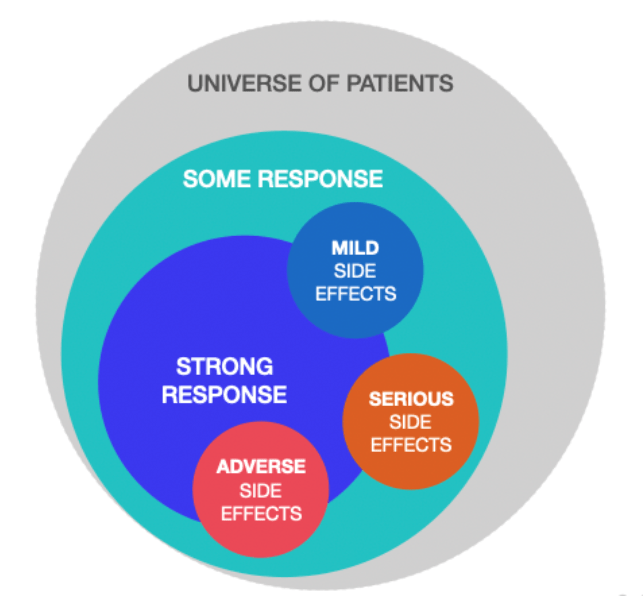Home > Insights > Market Research & Trend Analysis > How Precision Medicine Uses Stratification for Therapeutic Targeting
How Precision Medicine uses Stratification for Therapeutic Targeting
June, 2020

Narrowing the Universe of Patients
Precision medicine helps to narrow the universe of patients down to the segment of patients in which that specific therapy will have a positive strong response while minimizing the risk of serious and adverse side effects.
Step 1: In the most simplified of manners, the first step in this process is identifying the segment of the universe that will respond to therapy.
Step 2: The next step is identifying the segments that are likely to have mild, serious or adverse side effects.
Step 3: The teams will then use this information to identify the segment that will have a strong response to a therapy without having serious or adverse side effects
Obviously, this is a rather oversimplified approach to stratification of populations for therapeutic targeting – however the value of doing this kind of stratification is immense.
As more biopharma companies seek approval for high-cost oncology therapies valued upwards of $100,000 – more and more payors will be seeking more healthcare outcomes data in order to define reimbursement strategies.

By: Kiran Chin


